








MIDWEEK UPDATE 28 AUGUST 2019Plan Your Weekend……...Forthcoming Events……..Aviation News Worldwide Incidents and Accidents……This Week in Aviation History Notice Board    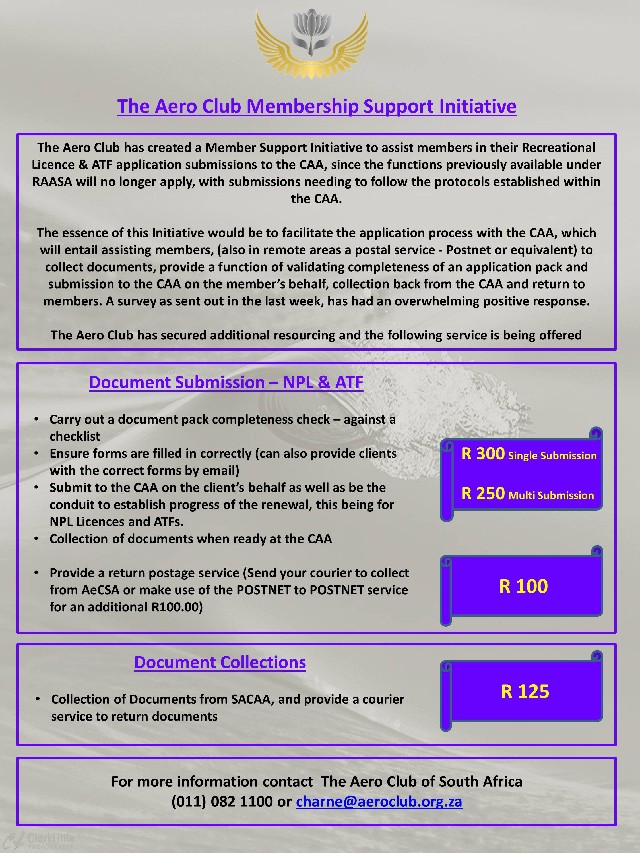   26-31: SAPFA World Precision Flying Championships - Castellon Spain. Contact Hans Schwebel cell: 082 656 3005 e-mail: hans.s@britsgranite.co.za    6-7: Heidelberg Varkfees Fly-inn. For more information go to www.varkfees.co.za 7: SAAF Museum Airshow AFB Zwartkop. For more information Mark Kelbrick Cell 082 413 7577 or E-mail: markkelbrick@yahoo.com 7: SAPFA Grand Central Fun Rally - Grand Central Airport. Contact Rob Jonkers cell: 082 804 7032 e-mail: rob@aerosud.co.za 14: Vans Fly in to Kitty Hawk. Contact Frank van Heerden e-mail: frankvh@sandown.co.za. website: www.fakt.co.za 8-13: World ANR Championships - Santa Cruz Portugal - Contact Hans Schwebel e-mail: hans.s@britsgranite.co.za cell: 082 656 3005 19: Oudshoorn Cango RC Scale Flying Club Event. Contact info@cangoflyingclub.co.za 20-23: Model Gliding Association of SA Nationals. For more information 1jansime@gmail.com 21-22: PMS South Africa is proud to present the South African Nationals 2019 plastic model competition hosted by IPMS Cape Peninsula. This is the premier event on the South African scale modelling calendar and promises to attract the cream of the crop in scale plastic modelling. 24: Puma Energy Rhino Park Fly-in. Contact Juan at juan.thessner@pumaenergy.com 28: Barnstormers Radio Model Warbirds Airshow. For more information go to www.barnstormersmfc.com 28: Wings & Wheels Matjhabeng Welkom airport. For more information contact Ian Buchanan 083 388 1678 or Dirk Smit 082 558 3914   5-6: Western Cape Regional Aerobatics Swellengrebel, Swellendam. Contact Annie Boone at chunge@mweb.co.za 19: SA Landing Championships - Brits Airfield - Contact Ron Stirk e-mail: melron@mweb.co.za cell:082 445 0373 26: SAPFA Baragwanath Fun Rally - Baragwanath Airfield. Contact Frank Eckard cell: 083 269 1516 e-mail: frank.eckard@mweb.co.za 26: SAAMA RC Model Helicopter Heli Fun, Bloemfontein. For more info go to www.reynekepark.co.za  2: SAPFA Rally Championships - Stellenbosch airfield. Contact Frank Eckard cell: 083 269 1516 e-mail: frank.eckard@mweb.co.za 8-10: EAA Sun n Fun Brits Airfield. Contact Marie Reddy 083 259 7691 9: EAA Sun & Fun Adventure Rally - Contact Rob Jonkers e-mail: rob@aerosud.co.za cell: 082 804 7032 23: SAPFA Springs Speed Rally - Springs Airfield. Contact Jonty Esser cell: 082 855 9435 e-mail: jonty@promptroofing.co.za 30 to 1 December: SAC Ace of Base Vereeniging Airfield. Contact Annie Boon e-mail: chunge@mweb.co.za   A UNIQUE FLYING EXPERIENCE-THE FUSION UL  The moment has come to introduce the new member of the Fusion family; Magnus Fusion UL. The ultralight aircraft is the result of a unique development that provides an unrivalled flying experience. Give yourself the luxury that only an ultralight machine can provide! Fusion UL is dynamic and economical, hit it right now! Photo © Magnus Aircraft. Composite is the future; current market trends and aeronautical developments clearly point in this direction. Composite material is extremely reliable and durable, but most importantly it has a lightweight structure. In developing the Fusion, Magnus has taken all possible uses into consideration and have significantly reduced the weight of the Fusion with nearly 100 composite components. The recent Kenyan Type Certification has opened the door to Africa which will soon become the emerging market for the fusion.  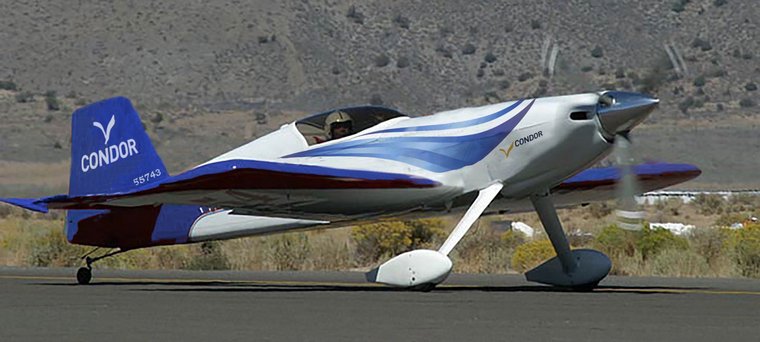 Condor Aviation has made its name building and testing bespoke modifications to light aircraft. Now, thrilled by the challenge of electric flight, Team Condor-eight engineers from Condor Aviation-is applying that same expertise to create a customised electric aircraft for Air Race E. Photo © Condor Aviation. Five questions with Martyn Wiseman, Head of Team Condor: Q. Why did your team decide to enter Air Race E? Air Race E is a tremendously exciting challenge! We're a competitive group of people who like to win, so air racing is a fantastic opportunity. Over the past 20 years, we've been undertaking R&D and modifying aircraft-first as a hobby and, more recently, as a professional operation. After meeting Air Race E CEO, Jeff Zaltman, we decided we were in a great position to assemble a team and build a competitive race plane. Q. Can you give us some insight on the aircraft you're currently working on? What is your approach? Firstly, we don't aim to reinvent the wheel! There are some brilliant, proven airframes out there. And with some-admittedly extensive!-modification, we can change the powertrain from fossil fuels to electric. What needs to be considered is the weight of the batteries to enable the aircraft to run at full speed for the duration required. There are two options available: an airframe capable of carrying a large 250 hp-plus motor with heavy batteries, or a lighter frame with a 100 hp motor and lighter batteries. Both approaches are viable, so we've decided to go for both: an unlimited racer and a lightweight-restricted category. Q. What sets your team apart in this race? We're one of just a few companies in the UK permitted to design and build or modify experimental aircraft under the new "E Conditions." This means we can design, build and test-fly anything aviation-related without having to wait for either the Permit to Fly or a Certificate of Airworthiness from the regulatory authorities. That cuts months, if not years, off the build time. Q. For you, what is the most exciting aspect of the race? I love the engineering challenge, and I love to be a pioneer. I also like racing, and I love to win! As a businessman, I find the most exciting thing is to take an idea, prove it and then take it to market. Q. How important is electric flight to the future of aviation? Critical-from both an ecological and a commercial point of view. Air travel is here to stay, so we have to look to an alternative means of power, even if only for short-haul flights in the first instance. If air racing provides a boost to battery technology-as F1 has done for fuel efficiency and KERS (Kinetic Energy Recovery System)-that can only be a good thing.  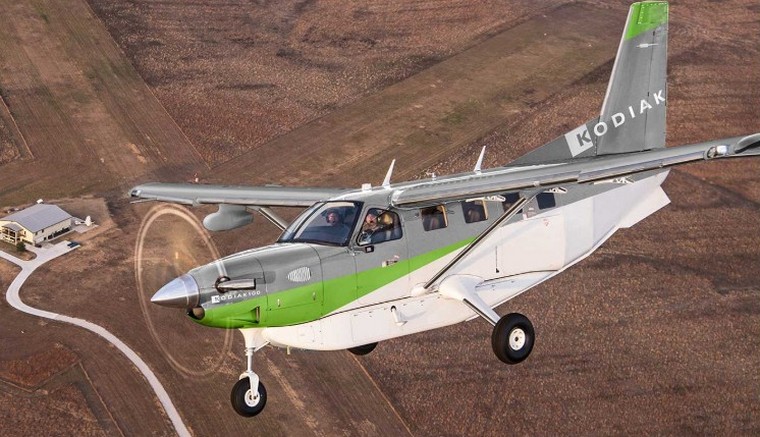 Quest Aircraft announced that the Kodiak displayed within the Aerocet booth at Airventure is a part of a recently completed three-Kodiak fleet deal with Dimor Aerospace, the German-owned company that owns Waco Aircraft. Photo © Quest Aircraft. Dimor will be equipping their Kodiaks for humanitarian aid and will be operating throughout Brazil, along the Amazon. Two of their Kodiaks will be outfitted with Aerocet 6650 composite floats. Delivery of all three aircraft is complete, and Dimor is in discussion with Quest about future aircraft. Sven Lepschy, CEO of Dimor Aerospace, noted, "The Kodiak is a perfect fit for our mission. But ultimately the reason we chose to do business with Quest was due to our comparable business philosophies. At Dimor, excellent customer service that goes above and beyond expectations is paramount. We've experienced exactly that with Quest, and the refreshingly positive attitude in their leadership reflects down to each and every employee we've worked with." Similar to new Kodiak customers, Dimor will be enrolled in Quest Aircraft's KodiakCare customer service plan, which Quest quietly launched in 2018. In addition to the standard two-year airframe warranty, KodiakCare provides owners 24/7/365 AOG Response teams, as well as 24/7 phone and e-mail technical support, and online access to technical publications. Additional KodiakCare features include a POH/AFM revision service, one-year enrollment to CAMP, and 2-years / 400 hours of enrollment in the ESP Gold Lite program for engine maintenance. "The customer experience is the most important area we can invest in, and we're committed to creating support programs that make our customers feel productive and cared for," said Rob Wells, CEO of Quest Aircraft Company. "We believe KodiakCare does that, especially for the international market, where we've recently expanded our AOG and technical support hours to 24/7." Quest also announced that beginning with the their 275th Kodiak, due to be completed in September of this year, Kodiaks will be now equipped with the latest Garmin GMA 1360 Audio Panel with Bluetooth connectivity. Owners and operators will enjoy the ability to connect their personal electronic devices directly to the aircraft audio panel. The pilot and passengers will be able to stream audio infotainment wirelessly with the enhanced audio panel. Additionally, Quest announced the effective elimination of the Kodiak's Maximum Zero Fuel Weight (MZFW). The removal of the MZFW limitation provides Kodiak operators with increased payload, mission capability, and operator flexibility, especially during shorter flights. This change is fleet-wide, covering all earlier model Kodiaks as well. In June it was announced that Daher, the French manufacturer of the TBM family of aircraft, intends to acquire Quest Aircraft Company. The acquisition's closing is expected to be completed by the end of 2019, subject to approval by the appropriate authorities in both countries.  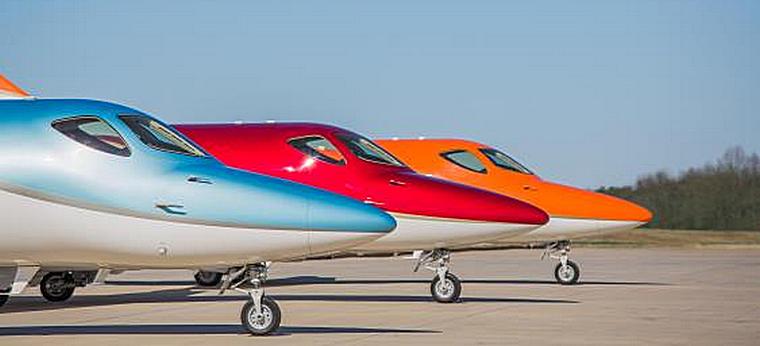 Honda Aircraft Company announced today that the HondaJet is the most delivered aircraft in its class for the first half of 2019, based on numbers provided by the General Aviation Manufacturers Association (GAMA). During the first six months of the year, 17 aircraft were delivered to customers around the world. Photo © HondaJet. "We are thrilled that the HondaJet continues to be the aircraft of choice of our customers, both future and current. Maintaining our position as the most delivered aircraft in our class is a reflection of our team's dedication to the design, service and efficient production of the most competitive very light jet," said Michimasa Fujino, president and CEO of Honda Aircraft Company. Honda Aircraft Company's sales and service footprint spans territories in North America, Europe, Middle and South America, Southeast Asia, China, the Middle East, India and Japan. The HondaJet fleet is currently comprised of more than 130 aircraft around the globe.   What happens when you combine the electric-propulsion expertise of an air taxi start-up with the composites know-how of a growing aerospace engineering and manufacturing company? Team Blue-BETA Racing brings the best of both worlds to Air Race E, soon to be the world's first all-electric airplane race, in its drive to advance electric-propulsion technology. Photo © Team Blue Beta Racing. "Racing is a learning environment, where high-risk or novel technologies can be rapidly tested more easily than in production." Kyle Clark, Head of Team Blue-BETA Racing BETA Technologies flew its first electric vertical take-off and landing (eVTOL) vehicle in 2018 (above). Lessons learned from this aircraft will help the team to develop an electric racing airplane for Air Race E. Five questions with Kyle Clark, Head of Team Blue-BETA Racing: Q. Why did your team decide to enter Air Race E? Because it looks like a lot of fun, and we didn't want to miss out! Air Race E offers us a great way to accelerate some of our core technologies. Racing is a learning environment, where high-risk or novel technologies can be rapidly tested more easily than in production. These technologies include, for example, our high-torque density motor architectures or our mobile 1MW recharging facility. Q. Can you give us some insight on the aircraft you're currently working on? What is your approach? It's a ground-up configuration that makes the most of our engineering and fabrication capabilities, as well as the advantages of electric propulsion. In addition to much greater efficiency than their gas counterparts, electric powertrains have a lower frontal area compared to an internal combustion engine of equivalent power when used in a fixed-wing aircraft. To make the most of this, we're designing an aircraft with an extremely small firewall area compared to an internal combustion-based racing airplane. The front profile of our aircraft is actually more akin to a glider. We also believe that a ground-up airframe enables us to best deal with the challenges of providing racing power from an electric powertrain, which has a very complex cooling flow. Q. What sets your team apart in this race? Our team is composed of experts in electric propulsion and composites. Blue Force Technologies provides world-class composite fabrication capabilities. They specialise in large soft-tooling-based resin infusion composites, which are ideal for the rapid prototyping environment of air racing. For ground testing, BETA Technologies has an array of test devices for electric propulsion, power and controls systems. Q. For you, what is the most exciting aspect of the race? It's exciting to see the pure performance characteristics of electric powertrains compared to traditional gas engines in a comparable airframe. The series will provide a fantastic showcase for electric aircraft. Q. How important is electric flight to the future of aviation? The transition to electric aviation is both necessary and inevitable. Eliminating our reliance on fossil fuels and leaded gasoline in aviation is critical as the industry continues to grow. It also potentially allows for a more financially viable future in aviation. Thanks to a reduced number of moving parts and mechanical complexity, electric aircraft have already shown lower operating costs in light sport aircraft, and we expect this to scale up to general aviation and larger vehicles.  PARIS-A $4 MILLION ELECTRIC STOLE THE SHOW 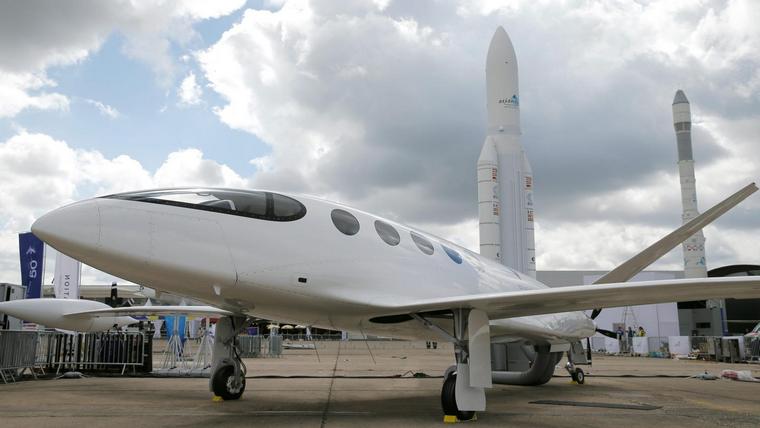 Israeli-based start-up Eviation Aircraft's "Alice", an all-electric, 9-passenger plane won its first commercial order with Cape Air a U.S. regional airline that serves 35 destinations in the U.S. and the Caribbean. Photo © Evation Aircraft. The Israeli start-up took a "double-digit" number of orders for its $4 million electric plane. Alice carries just nine passengers, but that's fine for Cape Air, a regional airline in the state of Massachusetts that completes hundreds of short flights each day. Its 92 planes serve about half a million passengers annually, making it one of the largest regional airlines in the US. Fusion's Alice can fly 650 miles (1,046 km) at around 500 miles per hour (805 km/h) with three electric motors on the tail and one on each wingtip. The prototype carries a 900 kWh lithium-ion battery (about nine times bigger than Tesla's largest automotive battery). Cape Air's short hops make it a perfect match for electric flight. For short flights under a few hundred miles electric propulsion is 10 times less expensive than conventional JetA1 fuel powered aircraft. With lower maintenance, faster turnaround, and more durable systems, electric aircraft can save millions of dollars for short-haul airlines each year. Large jet aircraft makers aren't waiting for the electric revolution. Boeing and JetBlue have invested in Zunum Aero to roll out a hybrid craft later this year. Right behind is the merged United Technologies-Raytheon releasing a hybrid retrofit of its regional turboprop, and Airbus's entry is due out in 2022. With the hybrid-electric aviation market worth up to $178 billion dollars by 2040 according to UBS, the green aircraft race only stands to intensify. "We do believe that within the next five or six years you're going to see not just us, but a lot of competition, working its way toward regional flights that are electric," says Eviation CEO Bar-Yohay.  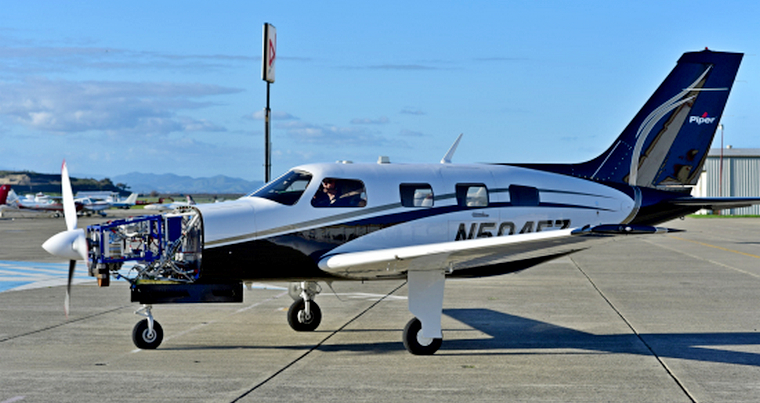 ZeroAvia announced advancements in developing a hydrogen-fuelled electric powertrain in the latest effort to make aviation sustainable and reduce greenhouse gas emissions. The solution aims to deliver the same performance as a conventional aircraft engine, and much lower operating costs Photo © Zeravia. Avia, the start-up that designed the hydrogen-fuelled electric powertrain has been testing the technology over the past year. The company will run a full test flight with hydrogen on board in a six-seat Piper M-Class aircraft a few weeks. Using hydrogen produced from local renewable energy is the most practical way to enable zero-emission aircraft of commercially meaningful size on traditional 300 to 500-mile regional missions. It will also be more economical than conventional turbine engines, or even the battery-based systems, on the total cost basis. ZeroAvia estimates that the total cost of operation will be around half that of flying conventional planes because of savings on fuel costs, more efficiency, and less maintenance. The company also believes that the tech will also be cheaper to use than battery-electric planes, in most cases, because high-density batteries have to frequently be replaced. The company plans to start supplying its powertrain to commercial operators and aircraft manufacturers in 2022, initially targeting up to 500-mile regional flights in 10 to 20-seat fixed-wing aircraft.   Kenya, Kichwa Tembo Airstrip: A de Havilland Canada DHC-8-200 operated by SafariLink Landing Gear Failure (Kenya) suffered a left-hand landing gear failure after striking several wildebeest on landing at the Kichwa Tembo Airstrip in the Maasai Mara National Reserve, Kenya. The occupants were not injured; the aircraft sustained damage to the left-hand main gear and no.1 propeller. Two wildebeest were killed in the accident. Spain, Madrid: An Evelop Airlines Airbus A330-300 with 353 people on board on a flight from Mauritius to Madrid was about four hours into the flight when the aircraft encountered severe turbulence causing cabin crew and passengers not strapped in to impact the cabin ceiling. Two doctors on board provided first aid to the injured. The flight crew continued the flight to Madrid, requested ambulances to meet the aircraft on arrival and landed without further incident. 16 people were assessed by medical services at the airport, 14 of them were taken to hospitals and were later discharged.  India, Delhi: A GoAir Airbus A320-200N was an hour and 15 minutes into its route to Bangkok before crew members realized that there were no charts. returned to Delhi International Airport mid-flight after crew noticed that no navigation charts were on board. The aircraft returned to Delhi. Two and a half later.   1 SEPTEMBER 1948 First flight of the Saab J-29, Sweden's first jet.  Photo © Gnolam / commons.wikimedia.org  |
                     |
 |
 |

Copyright © Pilot's Post PTY Ltd
The information, views and opinions by the authors contributing to Pilot's Post are not necessarily those of the editor or other writers at Pilot's Post.